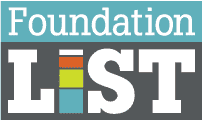2025 promises continued innovation and shifts in employment trends. The HR landscape has evolved significantly, affecting organizations across industries, including nonprofits. For nonprofit leaders, staying ahead of emerging HR trends isn’t just advantageous—it’s critical for thriving in a competitive talent market and sustaining operational efficiency. Gaining a clear understanding of the talent landscape and employment trends in the broader corporate sector equips nonprofits to remain competitive, agile, and mission-focused, maximizing their impact in a rapidly changing world.
In this article, we’ll explore key HR trends highlighted by SHRM’s 10 Trends That Shaped HR in 2024 and discuss their implications for nonprofit hiring and talent management for 2025.
1. Flexibility is becoming Non-Negotiable as reported by SHRM
Hybrid and remote work options have become permanent employee expectations. Nonprofits that embrace flexibility are better positioned to attract and retain top talent, particularly among younger, mission-driven professionals who prioritize work-life balance.
For many nonprofit organizations, operational demands have historically required in-person roles. Yet, by strategically integrating hybrid models where feasible, nonprofits can expand their candidate pool, especially in rural or underserved areas, while improving overall employee satisfaction.
2. AI’s Expansive Growth is Enhancing Talent Acquisition
This year, AI solidified its role as a critical tool for HR leaders, and nonprofits, often operating with limited resources, stand to benefit immensely from AI-powered recruitment solutions. These technologies streamline hiring processes by automating resume screening, identifying top talent, and enhancing candidate engagement, enabling nonprofits to allocate resources more effectively.
One such innovative tool transforming nonprofit hiring is GloballyHired. This platform offers nonprofits access to cutting-edge recruiting tools typically reserved for large corporate budgets—at a fraction of the cost. With features like automated reference checks, one-click interview requests, and built-in background checks, GloballyHired empowers nonprofits to simplify hiring and focus on their mission. By reducing costs and providing access to advanced technology, GloballyHired helps nonprofits overcome challenges like talent scarcity and skills gaps, ensuring they can attract and retain the right talent efficiently.
However, it’s crucial for nonprofits to measure the ROI of these tools. Demonstrating tangible results, such as improved retention rates and faster, more cost-effective hiring, will validate the investment and underscore the importance of adopting such technologies. By leveraging platforms like GloballyHired, nonprofits and other AI tools they can tackle workforce challenges head-on while maintaining a competitive edge in today’s talent-driven landscape.
3. Talent Scarcity and Skills Gaps Continue
The competition for talent has intensified, with widening skills gaps posing a significant challenge. For nonprofits, this means rethinking talent acquisition strategies to focus on skill-based hiring rather than traditional credentials.
Upskilling and reskilling initiatives are also critical. Nonprofits can partner with educational institutions or leverage online learning platforms to train employees, ensuring teams are equipped to meet evolving demands. Addressing skills gaps internally reduces dependency on external hiring and enhances organizational resilience.
4. Revitalizing Workforce Engagement is a Trend Reported by SHRM
Employee disengagement reached critical levels in 2024, affecting productivity and morale across sectors. For nonprofits, where staff often juggle high workloads and mission-critical responsibilities, disengagement can have profound consequences.
Nonprofits can counter this trend by fostering a culture of recognition and support. Celebrating achievements, offering opportunities for growth, and ensuring alignment with organizational missions can reignite passion and commitment among teams.
5. Data-Driven HR Decision-Making Continues
Nonprofits have historically underutilized data in HR. However, 2024 highlighted the benefits of HR analytics for improving retention, engagement, and recruitment strategies. By analyzing data trends, nonprofits can make informed decisions to address turnover, optimize team structures, and forecast future talent needs.
6. Charting a Path to the C-Suite Is More Prevalent
This year saw HR leaders stepping up as strategic partners, with many transitioning to executive roles. For nonprofits, this trend underscores the need for HR professionals who can align people strategies with organizational goals.
HR leaders in nonprofits can amplify their impact by championing diversity, equity, and inclusion (DEI) initiatives, driving workforce innovation, and advocating for policies that support employee well-being.
What’s Next for Nonprofit HR?
As these trends demonstrate, the HR landscape is rapidly evolving. Nonprofits that adapt to these changes will be better equipped to attract, engage, and retain top talent while driving their missions forward. Here’s how nonprofits can prepare:
- Adopt Technology Thoughtfully: Focus on tools that deliver measurable impact.
- Invest in Employee Development: Upskilling programs can address skills gaps and empower teams.
- Prioritize Engagement: Build a workplace culture where employees feel valued and connected.
- Leverage Data: Use HR analytics to inform strategy and drive decision-making.
By staying ahead of HR trends and integrating best practices into their operations, nonprofit organizations can position themselves as employers of choice, ensuring they have the talent and resources needed to make a lasting impact.
For more insights into the latest HR trends and strategies, explore SHRM’s 10 Trends That Shaped HR in 2024 or learn how Foundation List connects nonprofits with mission-driven talent.
Related Links:


